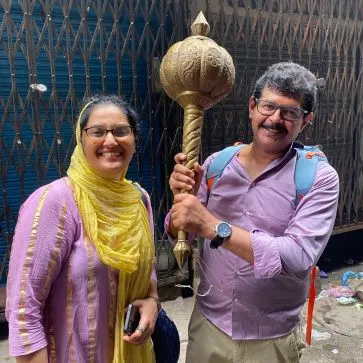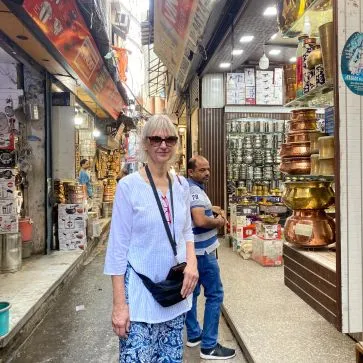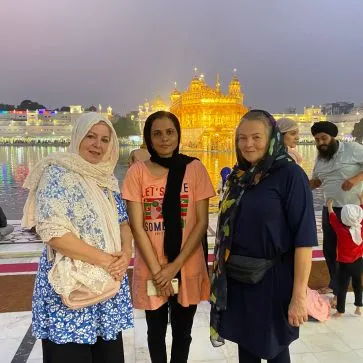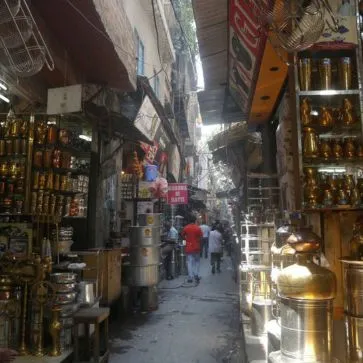Overview of the Amritsar Heritage Walk
The Amritsar Heritage Walk is a journey through the heart of one of India’s most vibrant cities. This immersive walking tour takes visitors through the historical lanes of Amritsar, offering a unique opportunity to explore the city’s rich cultural and historical heritage. The walk covers key landmarks that have shaped the city’s identity over centuries, allowing participants to experience Amritsar’s story from a personal, on-the-ground perspective.
One of the highlights of the Amritsar Heritage Walk is its proximity to the iconic Golden Temple. As the spiritual hub of Sikhism and India’s most revered place of worship, the Golden Temple tour is an essential part of the heritage walk. The Golden Temple tour offers visitors an insight into not only the religious significance of the temple but also the architecture, rituals, and culture surrounding it. With tour guides in Amritsar who are often locals with deep knowledge of the city’s history, tourists can delve into the historical relevance of each site they visit during the walk, making it a rich and educational experience.
As part of Walk and Explore’s services, the heritage walk in Amritsar also showcases the city’s lesser-known gems, allowing tourists to discover hidden spots integral to understanding Amritsar’s deep cultural roots. Amritsar walking tours are available for various interests, whether you’re focused on history, spirituality, or local traditions. This diversity of options ensures that every visitor, whether a first-time traveller or a seasoned explorer, finds something meaningful along the way.
Significance of Amritsar’s Historical and Cultural Heritage
Amritsar holds immense significance for its religious importance and as a centre of historical and cultural development. Known in ancient times as Ramdaspur, Amritsar’s old name reflects its origins, which are linked to the founder of the city, Guru Ram Das, the fourth Guru of the Sikhs. Establishing the Golden Temple was one of the turning points in its history, transforming the city into the spiritual capital of the Sikh religion. Today, Amritsar is not just a city but a symbol of resilience, unity, and spirituality.
The Amritsar Heritage Walk is an excellent way to understand the profound cultural evolution of the city. Walking through the streets, one can feel the convergence of the old and new, where centuries-old architecture stands alongside modern-day structures, creating a blend of history and progress. Visitors will find Amritsar walking tours to celebrate the city’s diverse culture, from the colourful bazaars filled with local artisans to the solemn memorials that tell the stories of the city’s past.
Beyond the Golden Temple, Amritsar’s cultural heritage is embodied in its many historic sites like Jallianwala Bagh, the Akal Takht, and the Partition Museum, all of which reflect the city’s significant role in India’s freedom struggle and its ongoing legacy in contemporary times.
The heritage walk in Amritsar provides a deeper understanding of this rich tapestry. The experience offers a chance to witness firsthand the lasting impact of religious and historical events that have shaped the city, from the horrors of the Jallianwala Bagh massacre to the peace and spirituality offered by the Golden Temple. As the city continues to grow, these landmarks serve as reminders of its past and ongoing journey.
The History of Amritsar
Origins and Founding of the City
The origins of Amritsar trace back to the 16th century when Guru Ram Das, the fourth Sikh Guru, founded the city. He established a tank of holy water, which later became the Sarovar of the Golden Temple. According to historical accounts, the town was initially called Ramdaspur after Guru Ram Das, who created the foundation for a significant pilgrimage site. The old name of Amritsar signifies the city’s origins as a sacred site for the Sikh community, particularly with the construction of the Golden Temple in 1581 under the leadership of Guru Arjan Dev, the fifth Sikh Guru.
The city’s name eventually evolved into Amritsar, which translates to “pool of nectar,” symbolizing the sacred waters of the Golden Temple’s pool. This water’s religious and cultural significance, where millions of pilgrims come to bathe, gave the city its current name. Over time, Amritsar grew from a simple religious site to a major centre for commerce, politics, and culture, especially as it became increasingly important in the context of the Sikh Empire in the 18th century.
Evolution of Amritsar as a Cultural Hub
Amritsar has long been a place of cultural and intellectual exchange. The city’s history is marked by transformations reflecting broader changes in Punjab and India. During the time of the Sikh Empire under Maharaja Ranjit Singh in the 19th century, Amritsar flourished as a political and economic centre. The city was known for its bustling bazaars, markets filled with artisan crafts, and its vital role in the administration of the Sikh Empire.
In the early 20th century, Amritsar’s role in India’s freedom struggle became prominent. The Jallianwala Bagh massacre in 1919 was a turning point that added another layer of historical significance to the city, making it a symbol of resistance and sacrifice in the fight for independence. This tragic event is still commemorated today, and it is a key point of reflection during the Amritsar Heritage Walk, where visitors can learn about its impact on the city and the nation.
Culturally, Amritsar continues to thrive. The city is renowned for its Punjabi culture, vibrant music, dance, and culinary traditions. Amritsar’s famous food culture, particularly the offerings in the historic Kesar Da Dhaba or the street food around the Golden Temple, is essential to the Amritsar walking tour experience. The local festivals such as Baisakhi and Diwali add a unique charm to the city, attracting locals and tourists alike.
Today, Amritsar Heritage Walk allows visitors to experience this dynamic evolution firsthand. From the sacred Golden Temple to the bustling streets, the walk offers a chance to witness the blend of religious devotion, historical struggles, and cultural traditions that continue to shape the city’s identity.
Exploring the Heritage Walk
Description of the Walk
The Amritsar Heritage Walk offers a unique, immersive experience that allows visitors to step back in time and explore the city’s rich cultural and historical tapestry. This walking tour is designed to take participants through Amritsar’s oldest and most iconic parts, offering a glimpse into the city’s centuries-old heritage. The walk covers a variety of historical landmarks, from the revered Golden Temple to the poignant Jallianwala Bagh, providing insights into each site’s cultural and spiritual significance.
The heritage walk in Amritsar is not just a stroll through the city’s streets; it’s an engaging journey through time. Led by knowledgeable tour guides in Amritsar, these walks are an excellent way to learn about the city’s evolution, historical events, and the significance of its key monuments. Visitors will discover stories about the formation of the Golden Temple, the Sikh Empire, and Amritsar’s pivotal role in India’s independence movement. As part of the Walk and Explore service, the walk is tailored to suit various interests, offering a deeper understanding of the city’s spiritual, political, and cultural history.
In addition to the well-known monuments, this walk also allows visitors to explore some hidden gems of the city that are often overlooked by traditional sightseeing tours. These sites offer a more intimate look at Amritsar’s history and culture, providing an enriching experience. Whether you’re a history buff, a spiritual seeker, or someone interested in exploring local culture, the Amritsar Heritage Walk offers something for everyone.
Key Routes and Landmarks
The Amritsar Heritage Walk covers several iconic landmarks, each with its unique history and significance. Here are some of the key routes and landmarks featured on the tour:
Major Attractions on the Heritage Walk
The Amritsar Heritage Walk is a carefully curated journey that takes visitors through some of the most significant landmarks in the city. These sites offer a glimpse into the rich history of Amritsar but also highlight the spiritual and cultural evolution that has shaped this vibrant city. Among the many attractions covered on the walk, two of the most iconic sites are the Golden Temple Complex and Jallianwala Bagh, both symbols of Amritsar’s cultural, spiritual, and historical importance.
Golden Temple

The Golden Temple, or Sri Harmandir Sahib, is Amritsar’s most revered and significant landmark. Known for its breathtaking architecture and deep spiritual meaning, the Golden Temple Complex is the centrepiece of the Amritsar Heritage Walk. It is the holiest shrine for Sikhs and one of the world’s most visited places of worship. Its architectural splendour and serene ambience make it a must-see on any heritage walk in Amritsar.
Spiritual and Architectural Significance
The Golden Temple is a marvel of Sikh architecture and represents the core values of Sikhism: equality, humility, and devotion. The temple sits amidst a large man-made pool called the Sarovar, which is considered sacred, and visitors often take a peaceful walk around it, reflecting on the teachings of the Sikh Gurus. The temple’s golden façade, with its intricate marble work and gold-plated dome, gives it its distinctive appearance and spiritual significance. The temple was designed by Guru Arjan Dev, the fifth Guru of Sikhism, in the 16th century, and over time, it has grown to become not only a religious site but also a symbol of peace, unity, and resilience.
One of the key aspects of the Golden Temple Complex that stands out during the Golden Temple tour is its openness to people of all faiths. Visitors from all backgrounds are welcomed with open arms, and the Guru Ka Langar, the free kitchen that serves meals to thousands of visitors daily, is an excellent example of the Sikh tradition of selfless service and community. This tradition of langar emphasizes the Sikh principle of equality, as everyone—regardless of caste, creed, or religion—sits together to share a meal.
The architectural beauty of the temple blends traditional Islamic and Hindu elements, with its gold-coated exterior and marble flooring reflecting a blend of cultural influences. The temple is surrounded by a beautiful parikrama (pathway), where visitors can meditate or soak in the peaceful surroundings.
The Golden Temple is an oasis of spiritual tranquillity where history and devotion intertwine as you walk through the Amritsar Heritage Walk. It offers a perfect start to your journey into the soul of Amritsar, and it’s not just the religious significance that makes this place unique but also the serenity and welcoming atmosphere that draws thousands of visitors from across the globe.
Jallianwala Bagh

Jallianwala Bagh is another key landmark in the Amritsar Heritage Walk, located just a short distance from the Golden Temple. This garden holds deep historical and emotional significance for every Indian, as it is the site of one of the most tragic events in India’s colonial history.
The Tragic History and Memorial
On April 13, 1919, Jallianwala Bagh became the site of a brutal massacre when British General Reginald Dyer ordered his troops to open fire on a crowd of unarmed Indians who had gathered at the park to protest against colonial rule. The protesters, primarily men, women, and children, could not escape as the garden was surrounded by high walls with only one narrow entrance. Over 1,000 people are believed to have been killed, and hundreds more were injured. This massacre became a turning point in India’s struggle for independence and was a defining moment in the national movement against British rule.
Today, Jallianwala Bagh serves as a poignant memorial to the martyrs who lost their lives in this horrific act of violence. The Jallianwala Bagh Memorial includes a well, which is now enclosed, where many people jumped to save themselves from the bullets, along with the bullet marks that are still visible on the walls. These marks stand as a chilling reminder of the brutality faced by those who were peacefully protesting for their rights.
A visit to Jallianwala Bagh during the heritage walk in Amritsar offers a sombre reflection on the sacrifices made by those who fought for India’s freedom. The peaceful garden now features a large monument commemorating those who died, with plaques bearing their names and accounts of the massacre. The park is also home to a museum that provides historical context, including photographs, artefacts, and detailed accounts of the tragic event.
Walking through the Jallianwala Bagh Memorial as part of the Amritsar Heritage Walk is an emotional experience, reminding visitors of the immense sacrifices made during India’s fight for freedom. It also serves as a testament to the resilience and determination of the Indian people in the face of oppression. The Memorial not only honours those who died in the massacre but also acts as a symbol of India’s continued pursuit of justice and independence.
Akal Takht
Role in Sikh Religious Leadership
The Akal Takht is one of the most critical institutions in Sikhism and a key landmark on the Amritsar Heritage Walk. Situated adjacent to the Golden Temple, the Akal Takht is a symbol of both the spiritual and temporal authority of Sikhism. The word “Akal” means “immortal,” and “Takht” means “throne,” representing the eternal authority of the Sikh Gurus. Founded by Guru Hargobind, the sixth Guru, in the early 17th century, the Akal Takht is considered the highest seat of Sikh political and spiritual leadership.
In Sikhism, the Akal Takht guides the community in religious doctrine, justice, and social welfare. It is here that important decisions regarding Sikh laws, values, and practices are made. The Akal Takht also plays an essential part in maintaining the integrity of Sikhism, ensuring that its tenets are followed and upholding the values of justice, equality, and human rights.
The significance of the Akal Takht extends beyond religious guidance and symbolizes the Sikh community’s resilience and courage. During historical periods of conflict, such as the colonial era and the Indian independence movement, the Akal Takht stood as a beacon of Sikh resistance. Visitors to the Amritsar Heritage Walk often find themselves inspired by its powerful symbolism and the stories of courage associated with this site.
Gurudwara Mata Kaulan
Historical and Religious Importance
Gurudwara Mata Kaulan is another essential stop on the heritage walk in Amritsar, deeply tied to both Sikh and local Punjabi history. Situated in the city’s heart, this Gurudwara is dedicated to Mata Kaulan, a revered woman disciple of Guru Arjan Dev, the fifth Guru of Sikhism. According to Sikh tradition, Mata Kaulan was a noblewoman who faced immense challenges in her life, including being ostracized and persecuted but found solace in the teachings of Guru Arjan Dev.
The Gurudwara Mata Kaulan marks the transformation of Mata Kaulan’s life through her devotion to the Guru. It is believed that she received divine blessings and peace at this location, and today, the Gurudwara stands as a symbol of faith, courage, and spiritual strength. It is also a reminder of women’s essential role in Sikhism, even in its early years, and their contribution to developing Sikh religious and social practices.
This Gurudwara also serves as a place of worship and reflection for both local Sikhs and visitors on the Amritsar Heritage Walk, where they can pay their respects and connect with the spiritual history that it represents.
Qila Ahluwalia
Fortified Heritage and Historical Context
Qila Ahluwalia (Ahluwalia Fort) is another significant stop on the heritage walk in Amritsar, offering visitors a glimpse into the city’s military and political past. Built during the 18th century, the fort was a stronghold for the Ahluwalia Sikh clan, one of the prominent families of the Sikh Empire. The Ahluwalia clan played an essential role in Amritsar’s history, and their fort stands as a symbol of the power and resilience of the Sikh rulers of the time.
The fort’s architecture reflects a blend of military and residential elements, with fortified walls and strategic positioning to defend the city. The Qila Ahluwalia is not just a relic of the past; it also offers insights into the broader history of the Sikh Empire and its efforts to safeguard Amritsar and the surrounding region during periods of conflict.
Today, Qila Ahluwalia is a reminder of the historic fortifications that once protected the city and its cultural heritage. Although much of the fort is in ruins, it still attracts history enthusiasts and those interested in exploring Amritsar’s historical context. Visitors to the Amritsar Heritage Walk can learn about the role of the Ahluwalia clan in shaping the city’s development, as well as its military strategies and cultural contributions.
Bhande Vala Bazar
Traditional Market and Cultural Experience
Bhande Vala Bazar is a lively and vibrant market located in the heart of Amritsar, making it an essential stop on the heritage walk in Amritsar. This traditional bazaar is a treasure trove of cultural and historical experiences, offering visitors a glimpse into the city’s old-world charm. The market is known for its bustling atmosphere, narrow lanes, and various goods ranging from spices, textiles, and handcrafted goods to traditional jewellery, antiques, and more. As one walks through this historic market, it feels as though time slows down, allowing visitors to absorb the rich culture of Amritsar’s commercial life.
Bhande Vala Bazar is also known for its local crafts, which provide a perfect opportunity to witness the craftsmanship passed down through generations. Traditional Punjabi attire, such as Phulkari embroidery, vibrant fabrics, and ethnic accessories, can be found in the market, making it a popular destination for those looking to take home a piece of the city’s cultural heritage.
Beyond the merchandise, the market also offers visitors an authentic experience of the local lifestyle and the city’s deep-rooted connection to its cultural traditions. As you wander through the market on your heritage walk in Amritsar, you will encounter street vendors selling everything from pind prasad (local sweets) to traditional medicines. The market’s atmosphere is ideal for those wishing to immerse themselves in the city’s everyday life and get a true sense of the local culture.
This market represents the essence of Amritsar’s vibrant community and is one of the many spots that reveal the fusion of historical architecture with modern-day culture during the walk.
Cultural Insights Along the Walk
One of the most enriching aspects of the Amritsar Heritage Walk is the opportunity to gain cultural insights into this vibrant city’s life, traditions, and heritage. As you walk through the historic streets and visit the numerous landmarks, you’ll encounter physical monuments and a living, breathing culture that has evolved over the centuries.
Amritsar’s cultural fabric blends Sikh traditions, customs, and influences from its historical interactions with various rulers and communities. The heritage walk in Amritsar is an immersive experience that allows visitors to witness how these elements come together daily. Whether it’s the sounds of devotional music near the Golden Temple, the aroma of traditional Punjabi cuisine wafting through the air, or the sight of artisans crafting intricate Phulkari embroidery, the walk provides an authentic glimpse into the heart of the city’s cultural heritage.
Along the way, visitors can interact with the locals, who are often eager to share their stories, traditions, and the significance of the landmarks they inhabit. These interactions provide invaluable insights into how history and culture continue to shape Amritsar’s identity.
Local Cuisine and Street Food
One of the most exciting aspects of the heritage walk in Amritsar is the chance to indulge in the city’s local cuisine and explore its vibrant street food culture. Amritsar is renowned for its flavorful dishes, and as you stroll through the town, you’ll encounter an array of food stalls offering some of the best regional delicacies.
A visit to Amritsar wouldn’t be complete without trying the Amritsari Kulcha, a traditional stuffed bread baked in a tandoor oven and typically served with spicy chickpea curry. The Lassi (a conventional yoghurt drink) is another must-try, especially on a hot day. Street vendors along the walk also offer a variety of snacks, such as Samosas, Pakoras, and Chole Bhature, which are perfect for those looking to taste the authentic flavours of Punjab.
For a truly unique experience, stop by the Guru Ka Langar at the Golden Temple, where free meals are served to thousands of people daily, symbolizing the Sikh principles of equality and selfless service. The food here is simple yet incredibly satisfying, and sharing a meal with fellow visitors and pilgrims provides a deeper connection to the community spirit central to the Sikh way of life.
The Amritsar walking tours offer more than just historical exploration—they provide a culinary journey through the heart of Punjabi food culture, making it a feast for the senses.
Traditional Arts and Crafts
Amritsar is a spiritual and historical hub and a city known for its traditional arts and crafts. The heritage walk in Amritsar offers visitors an opportunity to explore and appreciate the craftsmanship that has been a part of the city’s cultural identity for centuries.
Phulkari embroidery, a traditional Punjabi needlework style, is one of Amritsar’s most famous art forms. During your walk, you’ll find shops selling colourful garments, dupattas, and shawls, all adorned with intricate Phulkari patterns that reflect the vibrant life and culture of Punjab. The skill and artistry involved in creating these pieces are passed down through generations, and each piece tells a story of craftsmanship and cultural heritage.
Another popular craft in Amritsar is brass and copperware. Many artisans in the city specialize in creating beautiful handcrafted pots, bowls, and decorative items using traditional techniques. These items can be found in the markets along the heritage walk and provide visitors with a tangible connection to Amritsar’s rich cultural history.
Amritsar is also known for its carpet weaving, where local artisans create intricate patterns that are highly prized domestically and internationally. Walking through the city, you’ll encounter galleries and workshops where these crafts are displayed and sold. Engaging with the artists or watching them at work gives visitors an intimate understanding of the time and dedication that goes into preserving these traditional crafts.
Interactions with Local People
One of the most rewarding aspects of the Amritsar Heritage Walk is the opportunity to interact with the local people. Amritsar’s residents are known for their warmth, hospitality, and deep-rooted sense of community. During your walk, you’ll likely have the chance to speak with shopkeepers, artisans, street vendors, and even religious pilgrims from India and beyond.
These interactions provide valuable cultural insights and offer visitors a deeper understanding of what makes Amritsar unique. Locals are often eager to share their stories, tell you about the city’s history, and provide recommendations for exploring hidden gems. Whether it’s a conversation with a langar volunteer at the Golden Temple or a chat with a street food vendor about the best snacks in town, these personal encounters enrich your experience and make the heritage walk even more meaningful.
In addition to enriching your understanding of the city’s culture and history, these interactions also give you a strong sense of community that defines Amritsar. The city’s residents have an unspoken bond with the place they call home, and their pride in Amritsar’s cultural and spiritual heritage shines through in every conversation.
The Role of Guides on the Heritage Walk

The role of tour guides in Amritsar, particularly during the Amritsar Heritage Walk & Golden Temple tour, is pivotal to creating a memorable and informative experience for visitors. These guides are knowledgeable about the historical sites and serve as storytellers, connecting the dots between the past and present in a way that visitors can truly appreciate. In the heritage walk in Amritsar, the guides provide a deeper understanding of the city’s rich cultural, spiritual, and architectural significance.
Guides on the Amritsar walking tours have the expertise to provide contextual insights into the importance of landmarks like the Golden Temple, the historic walled city, and other lesser-known spots that contribute to the city’s heritage. They highlight the old name of Amritsar, which was historically known as Ramdaspur, and explain the evolution of the city’s name and character through the centuries.
Additionally, guides on these walks help visitors understand the cultural fusion that makes Amritsar unique. From its vibrant markets to the religious significance of the Golden Temple, the guides ensure that the Walk and Explore experience is both educational and enriching, making the tour much more than just a sightseeing event.
Heritage Walk Guides and Their Insights
Heritage walk guides in Amritsar are more than just tour leaders—they are custodians of the city’s history. They offer visitors a glimpse into the intricate history of Amritsar, from its founding by Guru Ram Das to its rise as a significant cultural and religious centre. These guides are well-versed in the stories and historical facts surrounding the Golden Temple and other iconic sites, such as Jallianwala Bagh, where they highlight the significance of these places in the broader context of India’s history.
When you embark on a heritage walk in Amritsar, the tour guides will share valuable insights into architectural styles, the blend of cultures, and the spiritual importance of the sites you visit. A walk-and-explore approach means that guides don’t just talk about the history—they bring the past to life through vivid descriptions, allowing visitors to feel like they are stepping back in time.
The insights provided by the guides also extend to the city’s everyday life. They offer glimpses into the traditions, festivals, and local customs that form the heart of Amritsar’s community life. For tourists, this more profound connection to the culture of Amritsar enriches their experience, making the Amritsar walking tours both informative and immersive.
Stories, Legends, and Folklore Shared During the Walk
One of the most captivating aspects of the Amritsar Heritage Walk & Golden Temple tour is the collection of stories, legends, and folklore shared by the guides along the way. Amritsar’s rich history is steeped in fascinating tales passed down through generations, and guides are the perfect storytellers to bring these legends to life.
During the heritage walk in Amritsar, visitors hear about the founding of the city, the miraculous stories of Guru Nanak and other Sikh Gurus, and the history behind the construction of the Golden Temple. The guides share tales of heroism, sacrifice, and spirituality, weaving these narratives into Amritsar’s streets and landmarks. These stories connect the physical spaces you explore with the deep spiritual and cultural meanings they hold.
Additionally, the folklore of Amritsar often includes anecdotes about the city’s legendary figures, such as Maharaja Ranjit Singh, who played a crucial role in Amritsar’s development. Guides highlight the famous legends and lesser-known tales of local heroes and spiritual leaders that shape the city’s identity. Visitors are transported into a world where history is alive, offering a richer understanding of Amritsar’s heritage.
Through these stories, the Amritsar walking tours become a journey not just through time but also through the city’s very soul. The legends and folklore shared during these tours help visitors appreciate Amritsar in a way that goes beyond sightseeing—they gain an emotional and spiritual connection to the city and its people.
When to Experience the Heritage Walk

Experiencing the Amritsar Heritage Walk is a must for anyone visiting the city, but choosing the right time to do so enhances the overall experience. The ideal time for this immersive journey is typically during the cooler months, between October and March. During this period, the weather is pleasant, making it perfect for exploring the city’s historic streets and monuments without the discomfort of extreme heat. The Golden Temple, a central highlight of the Amritsar Heritage Walk & Golden Temple tour, is best visited early in the morning or evening when the temple’s serenity and beauty can be truly appreciated.
Moreover, the Amritsar walking tours can be an enriching experience year-round, but for those seeking to avoid crowds, weekdays are usually less busy than weekends. If you are keen on enjoying the walk without rush, planning your visit early in the day, before the crowds gather, will ensure a peaceful and immersive experience.
Best Seasons and Times to Visit
The best seasons to embark on a heritage walk in Amritsar are the year’s cooler months, primarily from October to March. During this period, the weather is favourable for walking and exploring the city’s diverse cultural and architectural landmarks, including the Golden Temple, the heart of the Amritsar Heritage Walk & Golden Temple tour. The pleasant temperatures allow tourists to fully engage with the tour guides, who provide deep insights into the city’s history and significance without feeling fatigued by the heat.
For visitors who prefer avoiding the heat but still want to experience the city’s vibrancy, winter (from December to February) offers the perfect balance. The evenings during this time are cooler, creating a magical atmosphere as the Golden Temple lights up.
It’s advisable to check the weather forecast before planning your visit, as summer can be extremely hot, with temperatures soaring above 40°C (104°F). Visitors may find the Amritsar walking tours challenging in these months, mainly if they are not accustomed to high heat.
Festivals and Special Events
Amritsar is a city of celebrations, with festivals playing a significant role in the culture and heritage of the region. Participating in a heritage walk in Amritsar during one of these events offers a unique opportunity to experience the city’s spirit firsthand. Festivals such as Baisakhi, Diwali, Guru Nanak Jayanti, and Lohri bring the streets of Amritsar to life with vibrant processions, music, and cultural performances.
The temple and surrounding areas are bathed in spiritual energy during the Golden Temple’s special celebrations, such as Nagar Kirtans (religious processions). Visitors who time their Amritsar Heritage Walk & Golden Temple tour during such festivals will learn about the city’s history and witness the living traditions that define it.
For those who prefer a quieter experience, avoiding peak festival seasons is best. However, festivals provide an opportunity to see Amritsar in its full glory, with the Walk and Explore concept allowing tourists to experience the rich cultural backdrop of the city.
Helpful Tips for Tourists

Some practical tips can significantly enhance the experience for those planning an Amritsar Heritage Walk. First and foremost, it’s essential to book a local guide who knows the city’s history, culture, and landmarks intricacies. Tour guides in Amritsar provide an enriching experience by sharing valuable insights about the Golden Temple, Jallianwala Bagh, and the vibrant old city.
Carrying comfortable shoes is a must, as the heritage walk in Amritsar involves many walking through narrow streets and historical sites. Also, bringing a water bottle, sunscreen, and a hat will help keep you comfortable during the walk, especially during the warmer months.
For visitors who wish to experience Amritsar in-depth, exploring the local mathets is also recommended. These areas are rich in history and offer unique items such as traditional Punjabi fabrics, handicrafts, and religious souvenirs.
What to Wear and Carry
When heading out for an Amritsar Heritage Walk, dressing appropriately is vital for comfort and respect. Comfortable, breathable clothing is essential as you walk through historical sites, including the sacred Golden Temple. While there is no strict dress code for tourists, it’s important to note that the Golden Temple has a modest dress code. Both men and women are advised to cover their heads with a scarf or turban, which can be provided at the entrance.
Women should avoid wearing shorts or revealing clothing when visiting religious sites. A long skirt or pants and a modest top are recommended. Men should also avoid wearing sleeveless shirts in these sacred areas.
Carrying a small backpack or shoulder bag for essentials like a camera, water bottle, and sunscreen is helpful. Remember that shoes must be removed before entering the Golden Temple, so comfortable sandals or slip-on shoes are a good choice.
Safety Tips
Amritsar is generally a safe city for tourists, but like any major tourist destination, there are a few safety considerations to remember during your Amritsar walking tours. First, always stay with your guide or group, especially in crowded areas like the Golden Temple complex, where getting separated from the group can be easy.
Be cautious about your belongings, as with any busy tourist spot; pickpocketing can occasionally occur. It’s best to keep your valuables in a secure, zipped pocket or money belt, such as wallets, phones, and cameras.
While Amritsar is known for its hospitality, always stay vigilant in unfamiliar areas and avoid wandering alone in less populated areas after dark.
Cultural Etiquette
When embarking on an Amritsar Heritage Walk, following local cultural etiquette is essential to ensure a respectful and positive experience. Amritsar is home to the Golden Temple, a sacred site for millions of Sikhs, and showing respect for the local culture is paramount.
When visiting religious sites, remove your shoes and wash your feet before entering the temple. As mentioned earlier, covering your head with a scarf or turban is a sign of respect, and wearing modest clothing is advisable. Avoid loud talking, taking selfies in sensitive areas, or disturbing the peaceful atmosphere in places of worship.
Additionally, offering a small donation at the Golden Temple is polite as this supports the community kitchen (Langar) that serves free meals to thousands of people every day.
Following these cultural norms ensures a positive experience for yourself and others around you. These respectful gestures are an essential part of the heritage walk in Amritsar experience, reflecting the city’s spiritual heart.
Frequently Asked Questions
What is the duration of the Heritage Walk?
The Amritsar Heritage Walk typically ranges from 2 to 3 hours, depending on the specific route taken and the number of stops included. The walk generally starts early in the morning or late afternoon to avoid the heat, allowing visitors to enjoy the city’s sights, including the iconic Golden Temple, without feeling rushed.
During the walk, tourists can explore the narrow lanes of the old city, listen to the fascinating stories shared by local guides, and immerse themselves in Amritsar’s rich history. The guides usually include a visit to the main historical sites, making it a perfect duration for anyone interested in learning about the old name of Amritsar, its transformation, and its cultural significance.
How can I book a Heritage Walk tour?
Booking an Amritsar Heritage Walk is easy and can be done in simple steps. The first option is to book through local agencies offering Amritsar walking tours. Alternatively, you can also book directly through platforms like Walk and Explore, which provides well-curated tours to visitors. You can check online reviews, look for guides with high ratings, and choose a tour package that best suits your interests—the Amritsar Heritage Walk & Golden Temple tour or a specialized walking tour focusing on the city’s history, culture, and spiritual sites.
Booking in advance is recommended, especially during peak tourist seasons, to ensure availability and avoid last-minute hassles. Once you book, you’ll typically receive a confirmation email with details about the meeting point, time, and other important information for the tour.
Are the walks suitable for all age groups?
Yes, the heritage walk in Amritsar suits people of all ages. However, it is recommended that participants have essential mobility for walking through the city’s streets and historical landmarks. Since the walk covers diverse terrains, including narrow lanes and sometimes uneven paths, comfortable shoes are essential for everyone.
The tour guides are skilled in accommodating people with different walking abilities, and for those with limited mobility, some parts of the walk can be modified. Additionally, for families with young children or older adults, you can always inquire about shorter routes or breaks along the way. The Walk and Explore concept ensures that the pace can be adjusted to suit all participants, making it a pleasant experience for everyone.
Is there any dress code for visiting religious sites?
There is a dress code when visiting the Golden Temple and other religious sites during the Amritsar Heritage Walk. Both men and women are required to cover their heads. Visitors can use scarves or bandanas, often available at the temple entrance, or bring their own.
In addition to head coverings, modest clothing is recommended when visiting sacred spaces. For women, it’s advisable to wear long skirts or pants and a covered top. Men should avoid wearing sleeveless shirts or shorts. Wearing appropriate attire demonstrates respect for the religious and cultural traditions of the Sikh community.
As you explore the Amritsar Heritage Walk & Golden Temple tour, following these guidelines will help you blend seamlessly into the spiritual atmosphere of the Golden Temple and its surrounding sites.
What languages do the guides speak?
The Amritsar Heritage Walk guides are multilingual and can communicate in several languages, including English, Hindi, Punjabi, and other regional languages. When booking your tour, specify your preferred language if it’s different from English, as many tour guides can cater to tourists from all over the world.
English-speaking guides are widely available and provide a detailed explanation of Amritsar’s rich history, landmarks, and the old name of Amritsar, ensuring that tourists from different backgrounds have an enriching and informative experience.
Can I take photographs during the walk?
Yes, visitors are generally allowed to take photographs during the Amritsar walking tours, but respecting the rules is essential, especially at religious sites like the Golden Temple. Photography is permitted in most parts of the temple complex, but visitors should avoid taking pictures during prayer times or in areas where it’s prohibited.
Some areas inside the Golden Temple may have restrictions, so always ask the guide for permission before photographing, particularly in more sacred or solemn spaces. The guide will also help you capture the best angles of the city’s rich heritage, ensuring that your memories are beautifully documented.
What is the best time of day for the walk?
The best time for an Amritsar Heritage Walk is early in the morning or late in the afternoon. The weather during these times is more incredible, making exploring Amritsar’s historical streets more comfortable, especially in summer. Early morning visits are particularly special, as the Golden Temple is bathed in a soft glow at sunrise, creating a serene and peaceful atmosphere.
In the evenings, you can enjoy the temple’s lights and the vibrant energy of the surrounding areas, making it a perfect way to cap off the day. A morning or evening tour also helps you avoid the midday heat and crowds, allowing for a more leisurely and immersive experience.
Book Your Heritage Walk with Walk and Explore

Booking your heritage walk in Amritsar through Walk and Explore ensures a well-organized, informative, and memorable experience. The platform offers a variety of packages, from short walks through the old city to in-depth tours that cover the Golden Temple and other significant historical landmarks.
Walk and Explore guarantees knowledgeable and friendly tour guides, ensuring that visitors not only see the major sights but also understand the history, culture, and legends that make Amritsar unique. Their expert guides provide insightful commentary on Amritsar’s evolution, including the story behind its old name of Amritsar and how the city became the spiritual centre it is today.
How to Book a Tour
Booking a heritage walk in Amritsar is simple. You can visit the Walk and Explore website or app and select the tour that fits your interests. After selecting your tour package, choose your date and time and pay online. You’ll receive a confirmation email with all the details you need to know, such as the meeting point, time, and any special instructions.
Booking in advance is recommended, especially during the peak tourist season. You can also read reviews and check the credentials of the tour guides to ensure a high-quality experience.
Contact Information and Booking Links
To book your Amritsar Heritage Walk tour, visit the official website of Walk and Explore or use their app. Contact details, booking links, and customer support information will be provided to assist with your reservation. The platform also offers live chat support for any questions about the tour and booking process.
Special Offers and Discounts
Walk and Explore occasionally offers special discounts and packages for groups, families, and first-time visitors. Keep an eye on their website or social media channels for promotions or seasonal discounts that can help you save on your Amritsar walking tours.
Joining during the off-peak season also gives you the advantage of better rates without compromising the quality of the experience.
Reflecting on the Importance of Amritsar’s Heritage
The Amritsar Heritage Walk & Golden Temple tour is not just about visiting iconic landmarks but immersing yourself in the rich history, culture, and spiritual significance of one of India’s most revered cities. The Golden Temple, along with other historical sites, serves as a reminder of Amritsar’s deep-rooted spiritual legacy, and through this tour, visitors can understand the city’s transformation from its old name, Amritsar, to its modern-day significance.
Personal Recommendations for Visitors
To make the most of your heritage walk in Amritsar, I recommend listening to the local guides, visiting the Golden Temple during quieter hours, and exploring the nearby markets for a complete cultural experience. Be prepared to walk, wear comfortable shoes, and embrace the city’s vibrant energy, which will leave you with unforgettable memories.






